The Midnight Sky is a post-apocalyptic science-fiction epic with an intimate character study at its core. Directed by and starring George Clooney and shot by Martin Ruhe, ASC, the film juxtaposes the journey of a crew of astronauts, including Commander Tom Adewole (David Oyelowo) and scientist Sully Rembshire (Felicity Jones), aboard the spaceship Aether returning to Earth from a mission to Jupiter with the efforts of scientist Augustine Lofthouse (Clooney) to warn them off from the aftermath of a global catastrophe.
Lofthouse must struggle with the loneliness of being the last man on Earth and navigate a terminal disease, which requires regular transfusions to prolong his final days. As he endeavors to communicate with Rembshire and her crew, Lofthouse must also overcome the harsh conditions of the Arctic research station he calls home and reconcile with his estrangement from his family over his lifelong dedication to his career.
Meanwhile, Rembshire faces incredible challenges of her own as the Aether navigates unexpected dangers and ambiguity over the silence of their rapidly nearing home world. Ruhe shot The Midnight Sky from November 2019 through February 2020 at Shepperton Studios in the UK and on location in Iceland and the Canary Islands.
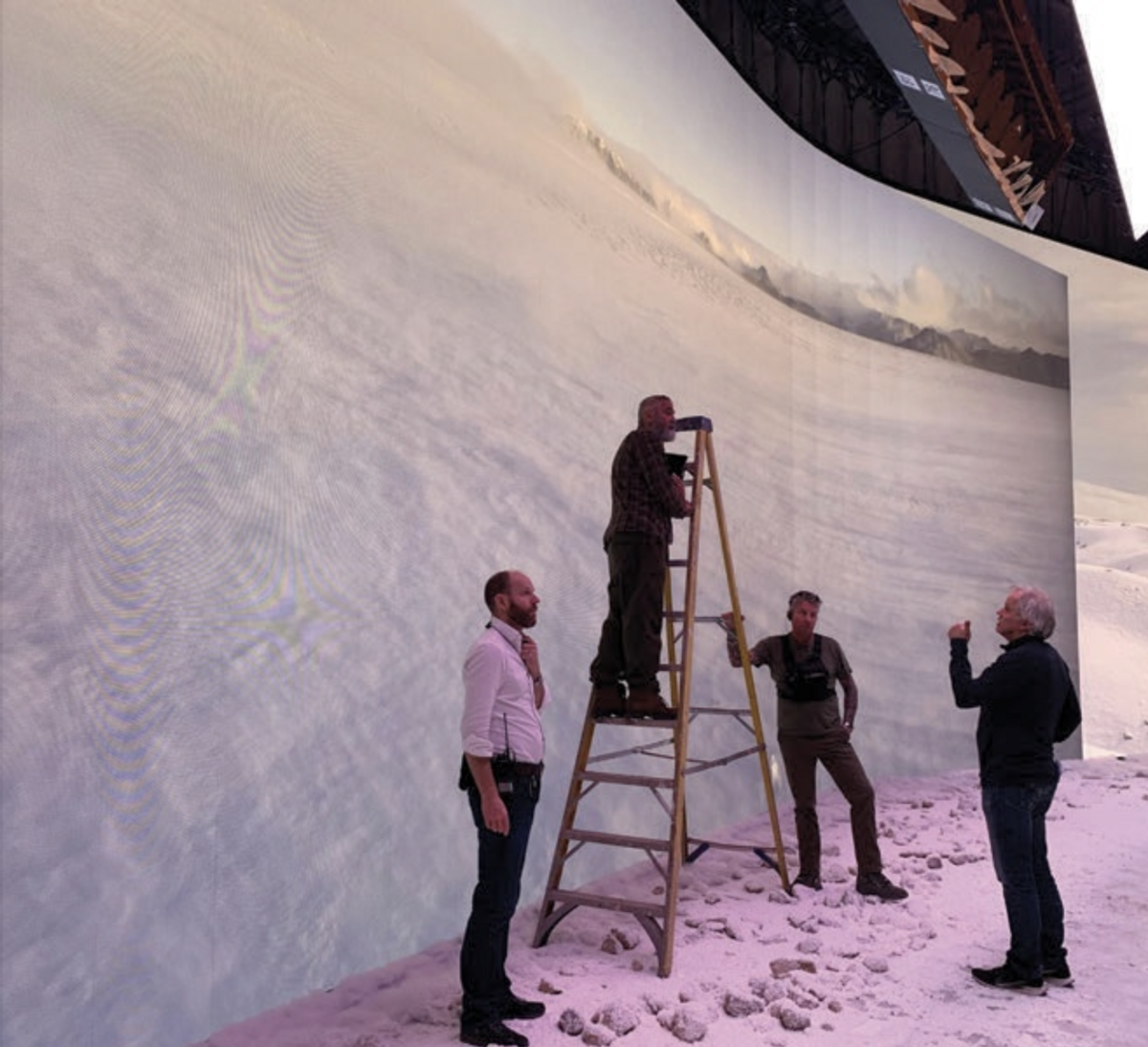
Clooney and Ruhe collaborated previously on The American and the Catch-22 miniseries. “Things worked out really well on Catch-22,” remembers Ruhe. “George and I were at the premiere of the series in Los Angeles, and he invited me to work on his next project. He explained the story was like a mixture of The Revenant and Gravity, and I thought that sounded great. He also referenced On the Beach.”
“Martin’s been shooting beautiful films for a long time, and it was really clear, for me as a director, what a gifted cinematographer he was,” says Clooney. “We talked about how to capture the size and scope of the locations. Because it’s also a meditative piece, we looked for ways to get inside the characters’ heads. Martin brought in these detuned lenses that were amazing because the focus was different on characters next to each other. We also wanted to shoot a lot of handheld, so you’d feel like you were there with the characters.”
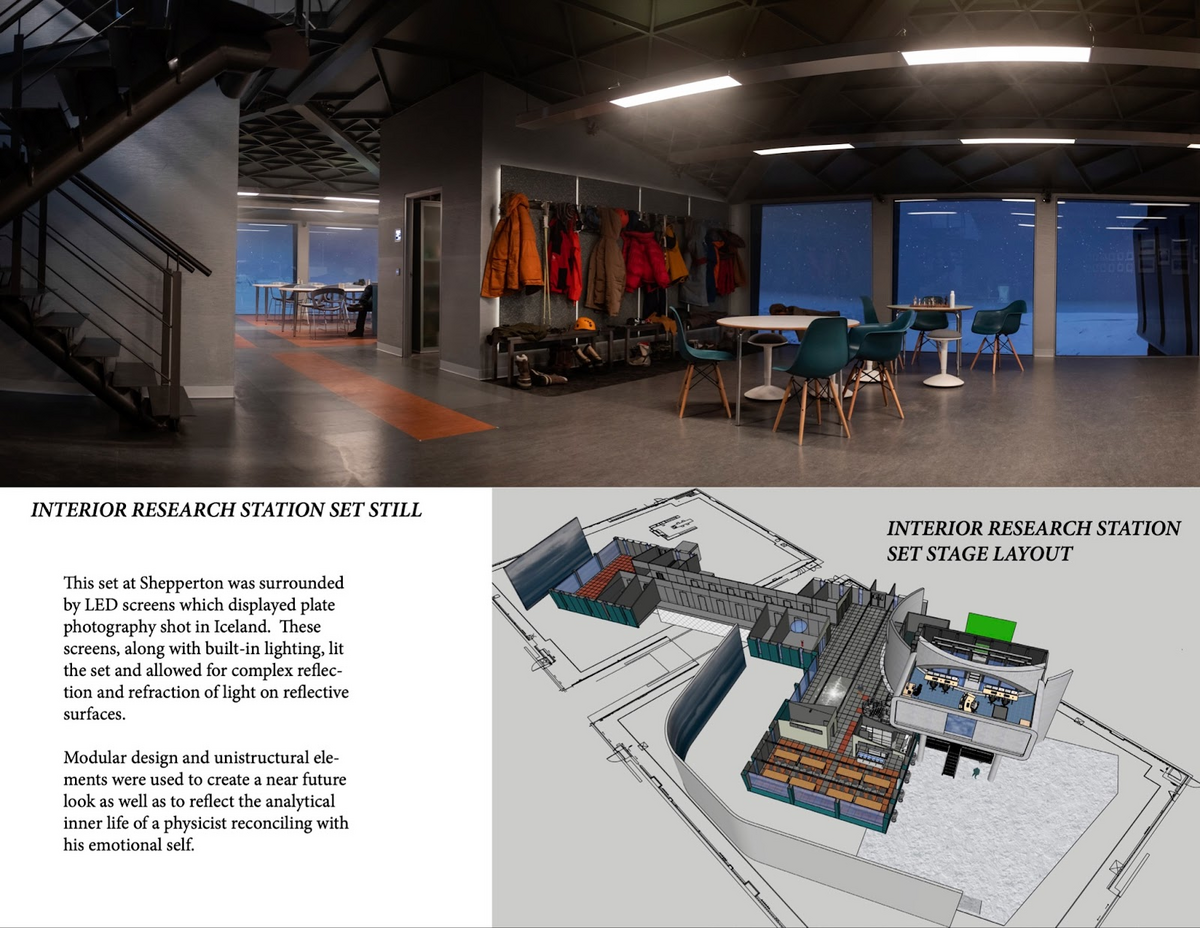
“We used mainly DNA lenses and had them detuned to our liking to give them more character — they’re designed for it,” says Ruhe. “We also used a special 58mm lens from Arri called the 58T, the only one of its kind; with it, only the very center of the frame is in focus, and everything else falls off very rapidly. We used it when we wanted to be in a character’s head, in their mind space. One example is when Maya [Tiffany Boone] sees the first droplet of blood floating around in her helmet during the spacewalk. Another is when Sully [Felicity Jones] is alone in the communications pod, contemplating things.”
The key crew included gaffer Julian White, rigging gaffer Tommy Royal, and console operator Simon Baker. Ruhe also collaborated closely with production designer Jim Bissell and visual effects supervisor Matt Kasmir.
On the Glacier
Production began on location at the Vatnajökull Glacier in Iceland, which stood in for the exteriors of the Barbeau Observatory and research station. “We just built the entrance to the station right off the glacier so you could film someone entering in Iceland and then cut to the studio,” reveals Bissel. “When we first started, we considered places like British Colombia or Norway, which have beautiful vistas, but you need a helicopter to get to. Iceland’s much easier to access, and they’ve got the largest glacier in Europe.”

“We brought some camera and rigging crew from England along with a lighting team, although we didn’t use them much because the conditions were rough, and we worked mostly with natural light,” recalls Ruhe. “We also used a local location team and a DJI Inspire drone crew. I like to include a local crew who knows the locations well. I remember looking down often at a frozen light meter, and we had to stop shooting George whenever we couldn’t see his eyes because they were covered with ice. In many of the shots, his beard looks frozen, and it really was.”
For Clooney’s part, the ends of shooting in intense conditions justified the means. “You can’t fake the scope of riding a snowmobile across the top of a glacier,” he observes. “You just can’t make everything digitally, and for the actors, myself included, you need that degree of cold and loneliness to have everything feel authentic.”
The production was also shot in a relatively less intense climate at Höfn, Iceland, to depict the Lake Hazen station Lofthouse ultimately treks to as he attempts to communicate with the Aether. Ironically, the location had no snow at all, so the visual effects crew had to both extend the set to include its massive satellite dish and add surrounding snow.
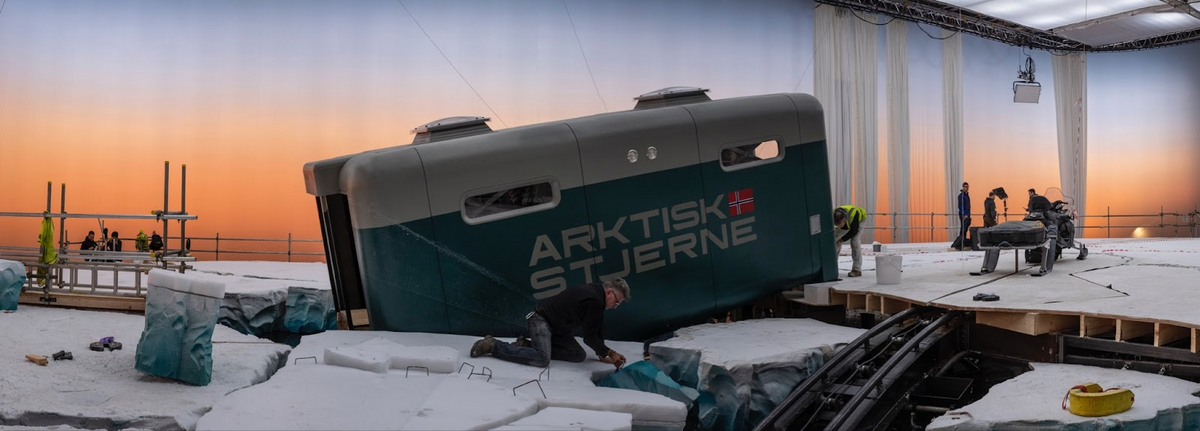
On the Virtual Stage
As production shifted back to Shepperton, the main blocks of shooting included all of the interiors with Lofthouse on the various research stations and the interior and exterior sequences concerning the Aether. To depict the tundra visible through the arctic interiors’ windows, the production deployed the StageCraft LED wall in-camera visual effects process pioneered by ILM on the Disney + streaming series, The Mandalorian.
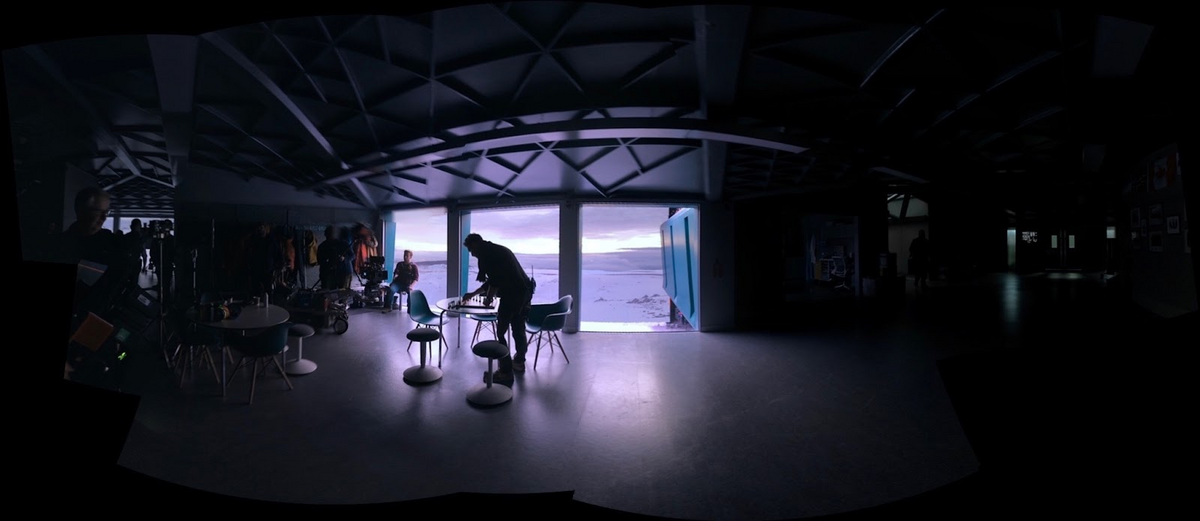
Visual effects supervisor Matt Kasmir oversaw the capture of live-action footage from an array of five Alexa Minis in Iceland. “We shot various times of day and various weather conditions, and as luck would have it, we captured the only snowfall that occurred on the glacier during the production,” says Kasmir. “We also did photogrammetry and LIDAR surveys of the environments to physically project what we’d shot. After stitching everything together, we ended up with about 270 degrees of imagery. Then ILM used Unreal Engine to project that material onto an LED wall that was approximately 130 feet long and 30 feet high outside the windows of our sets.”
“Matt introduced us to StageCraft, and we saw some tests at ILM, and all agreed the process would add a layer of realism both to the cinematography and for the actors,” says Ruhe. “There’s a shot when Lofthouse is in the control room drinking coffee in the morning and looking out the window. All those reflections in his eyes and on the set are in-camera and real. We used the LED wall to achieve those reflections and basically light the set itself.”
“The wall was amazing, and I’ve never seen anything like it before,” enthuses Clooney. “We had witness cameras every 8 feet or so on the stage to monitor and track our camera. So if we were on a dolly and boomed up, it would immediately read that and change the perspective outside on the wall to match. You were lighting by the actual scenery, which allowed us to move much quicker and saved us a lot of work we would have had to do in post-production. It was a great luxury to have that incredible setup.”
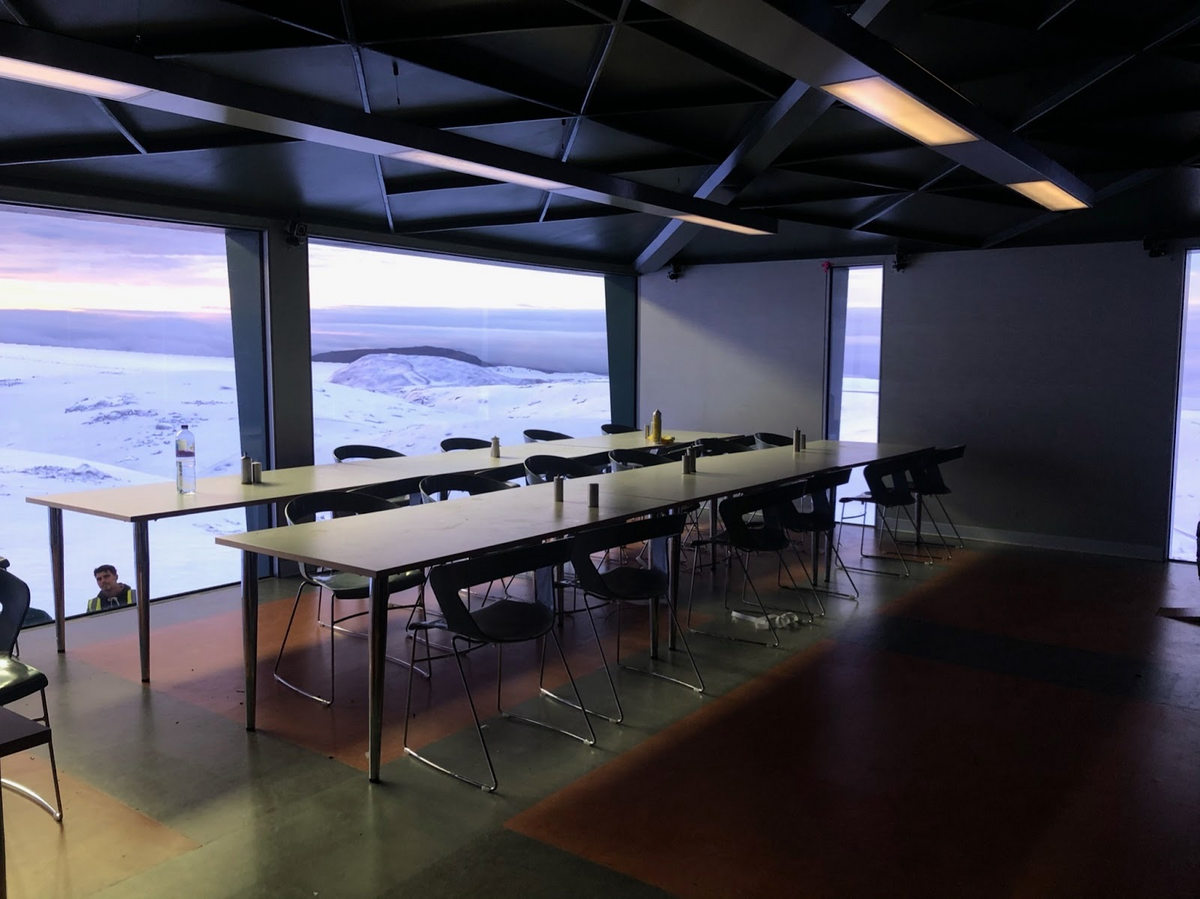
Classic Technique
Although The Midnight Sky production team embraced many state-of-the-art virtual production techniques, it also deployed old-school methods where appropriate. One example involved arctic exteriors captured on stage and often involved underwater work and elaborate stunts. To create a believable sky indoors, gaffer White surrounded the set with an enormous backlit grey Rosco rear projection screen.
“I learned the technique from Haris Zambarloukos, BSC on Mamma Mia! to simulate a day/night interchangeable horizon line around a village,” White remembers. “It’s tough to create a skydome inside a studio, especially if you’re using tungsten or HMI units because you’ll always see the hard shadows. We showed some tests of our approach to the visual effects team, and they were like, ‘yeah, that’s going to work.’
“So, we ordered 490 Arri SkyPanels and 180 feet of the Rosco material,” White continues. “It works well on camera, especially when defocused. The only issue was some visible wrinkling when the material got cold. To create the sun’s look in a snowstorm, we used a Sumolight Super 7: an array of seven LEDs in a hoist. We mounted the Rosco on curtain tracks, and the coverage was about 220 degrees around the set. We could cut back and forth between shots taken in Iceland and on stage, and you couldn’t tell the difference. The post-production team said the process saved us a fortune in not having to do everything green screen.”
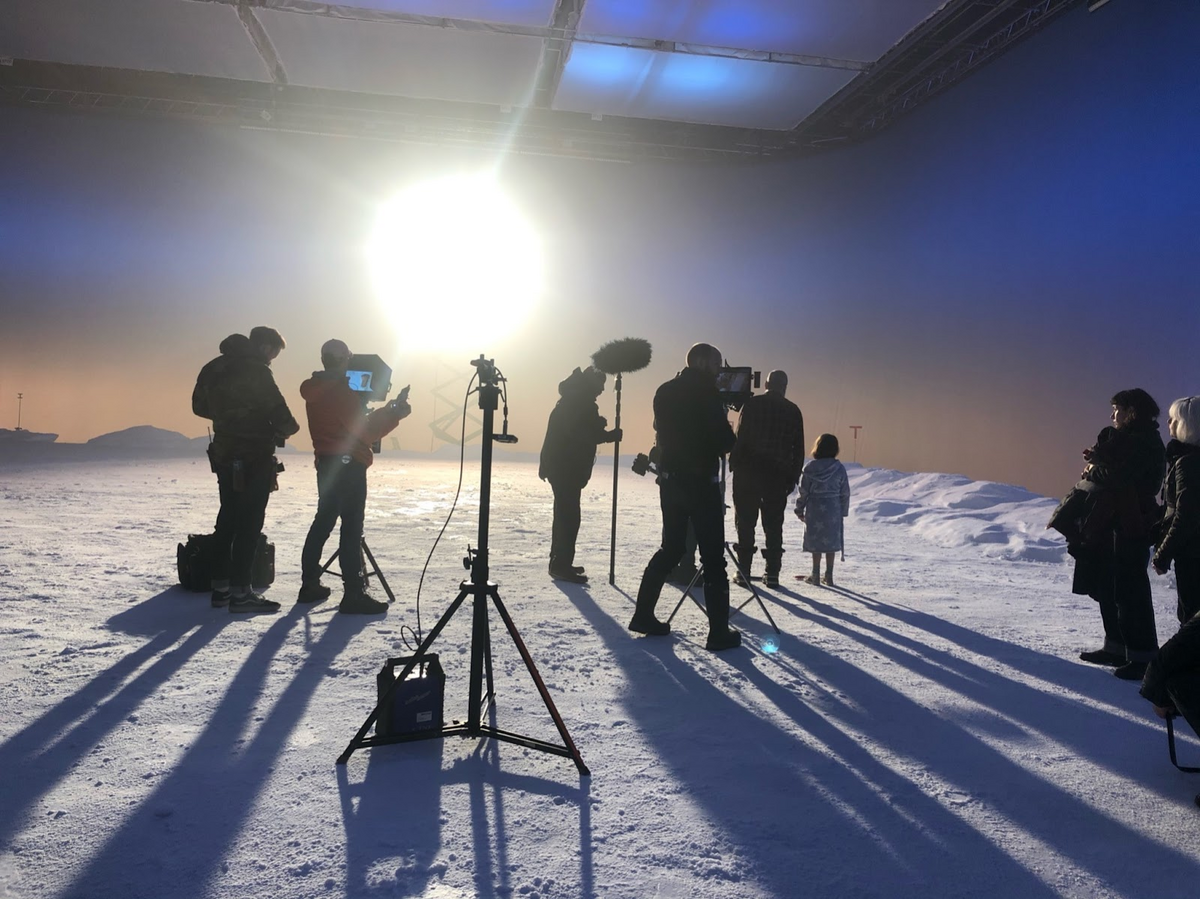
“Working with the Rosco screen was amazing,” Ruhe adds. “In addition to the day or night ambiances, we could also feed footage directly into the Skypanels as RGBW data to create special lighting effects. So, you could make a specific blue sky, modulate a snowstorm or whiteout, and simulate the effects of the aurora borealis.”
An Inviting Spaceship
Clooney had to both act and direct during the arctic sequences, but as production transitioned to scenes onboard the Aether, he could focus his efforts behind the camera. Bissell, who also co-designed the iconic spacecraft in E.T. the Extra-Terrestrial with Ralph McQuarrie, sought an organic and inviting spaceship.
“George didn’t want to use the typical industrial vocabulary you see in most sci-fi movies today,” says Bissell. “So, we envisioned a ship 30 years ago that embraced two emerging technologies. One is 3D printing, where you could send lightweight, radiation-shielding materials into space and then print out an inflatable volume of your interior, saving you the cost and complexity of launching something massive from Earth.”
“We combined that concept with an engineering trend called topological optimization, where a computer generates exactly where a material needs to be to respond to the physics and stress that are going to be exerted on it,” Bissel continues. “You get these exquisite, organic objects that are like Gaudí on acid. It’s very cool! The Aether has a visible endoskeleton and exoskeleton, which support the infrastructure and protect the astronauts as they hurtle through space.”
A standout sequence involving the Aether occurs when the astronauts must repair their communications equipment via a zero-gravity spacewalk. The crew incorporated the previs development they’d completed and shot the action on portions of a full-sized exterior setpiece. “We didn’t shoot bluescreen for the spacewalk,” explains White.
“Instead, we put up a large black backing and shot with one Arri M90 9K HMI to simulate directional light coming far away from the sun. The ship has a latticework solar shield in front, which we simulated with an 8’ x 4’ gobo. We also made 20-foot bogeys on wheels with grid cloth and SkyPanels to simulate moving light as the astronauts maneuver outside the ship.”
Ruhe deployed a special Arri 58T lens for a moment when something goes wrong during the spacewalk. “We wanted to stay with this character and emphasize their experience,” says Ruhe. “The focus is so specific it gets you into the character’s mind. It reminds me a bit of what Roger Deakins, ASC, used on The Assassination of Jesse James.”
The spacewalk sequence ends with one of the characters suffering a severe injury, and their blood floats in zero gravity. “In terms of visual effects and the story you’re trying to tell, I think the blood sequence plays the strongest,” Clooney says. “It’s unique and different. Of course, it was a major challenge for the actors because, during filming, we just had a few tennis balls bouncing around for reference.”
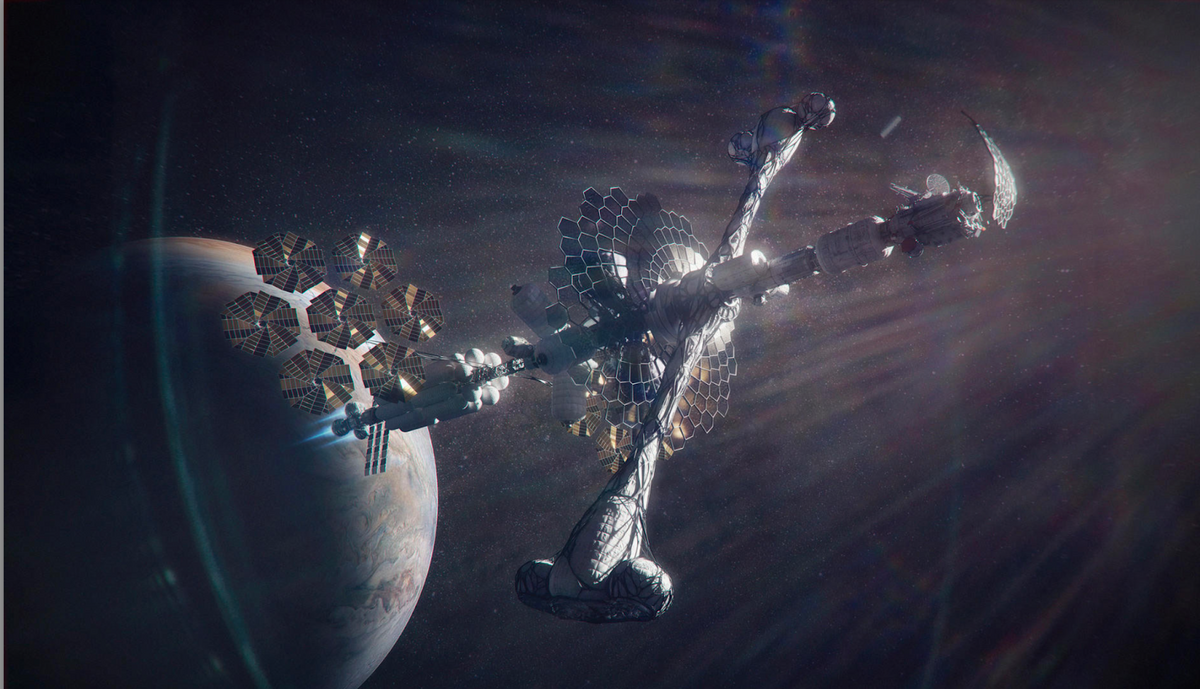
Big Changes
Upon wrapping up production at Shepperton, the crew shifted to La Palma, Spain, part of the Canary Islands, in February 2020. La Palma stood in for flashbacks to crucial moments in Lofthouse’s life and the surface of K-23, the habitable moon of Jupiter, which the Aether surveyed. “We did five days of prep and five days of shooting in La Palma,” Ruhe says. “We planted some plants in a lava field for Sully to run through. I knew we’d do a lot of development on those shots in post because you wanted it to look otherworldly but also like a paradise they could be longing for.”
“We changed the colors and rebuilt the vegetation, but we still needed the topography to make it work,” adds Clooney. “La Palma had all that as well as a nicer climate than England in February. We needed it to be warm and beautiful. Locations make all the difference in the world. As we get more into a digital age where you can fake a lot of stuff, but you can’t fake the big things.”
As the production wrapped, the restrictions of the COVID-19 pandemic were beginning to appear and would necessitate post-production under quarantine conditions. Clooney and Ruhe continued to work remotely with editor Stephen Mirrione and Company 3 colorist Stefan Sonnenfeld. “I was supposed to remain involved in reviewing visual effects throughout post, but the situation prevented much of that,” remarks Ruhe. “I was fortunate enough to be able to look at visual effects in London a few times and stay in the loop. We had a lot of Zoom calls and Streambox sessions.”
“I could not travel to Los Angeles for the final grade, so we ended up doing it remotely,” Ruhe adds. “I went into a room at Company 3 in London, and Stefan was at Company 3 in Los Angeles. Then George would review shots there as well. We’d talk and work our way through. It was not ideal, but amazing that it all worked out.”
“I was able to edit remotely via Evercast with Steve Mirrione, but of course, it’s a bummer that you’re not sitting together and looking at a much larger screen,” says Clooney. “There was one interesting thing we were able to do before locking picture with the visual effects. We went down to the Village theater in Westwood, and they were able to open up. There were just four of us in the theater watching on the big screen. It was hugely informative because we could see a camera hiding in the bottom of the frame in one shot, things you just wouldn’t notice on smaller screens. It’s not fun not being in the same room with your editor or colorist, but for the most part, post worked out pretty well.”
Asked to assess the completed film compared to his initial vision, Clooney offers, “the look of it ended up being everything I could have hoped for and more. Between Martin and the visual effects team, we made an elegant and beautiful film. There’s a lot of this movie with no dialogue at all. So, the cinematography, the score, and the visual effects have to walk us home. I’m thrilled with the final product.”
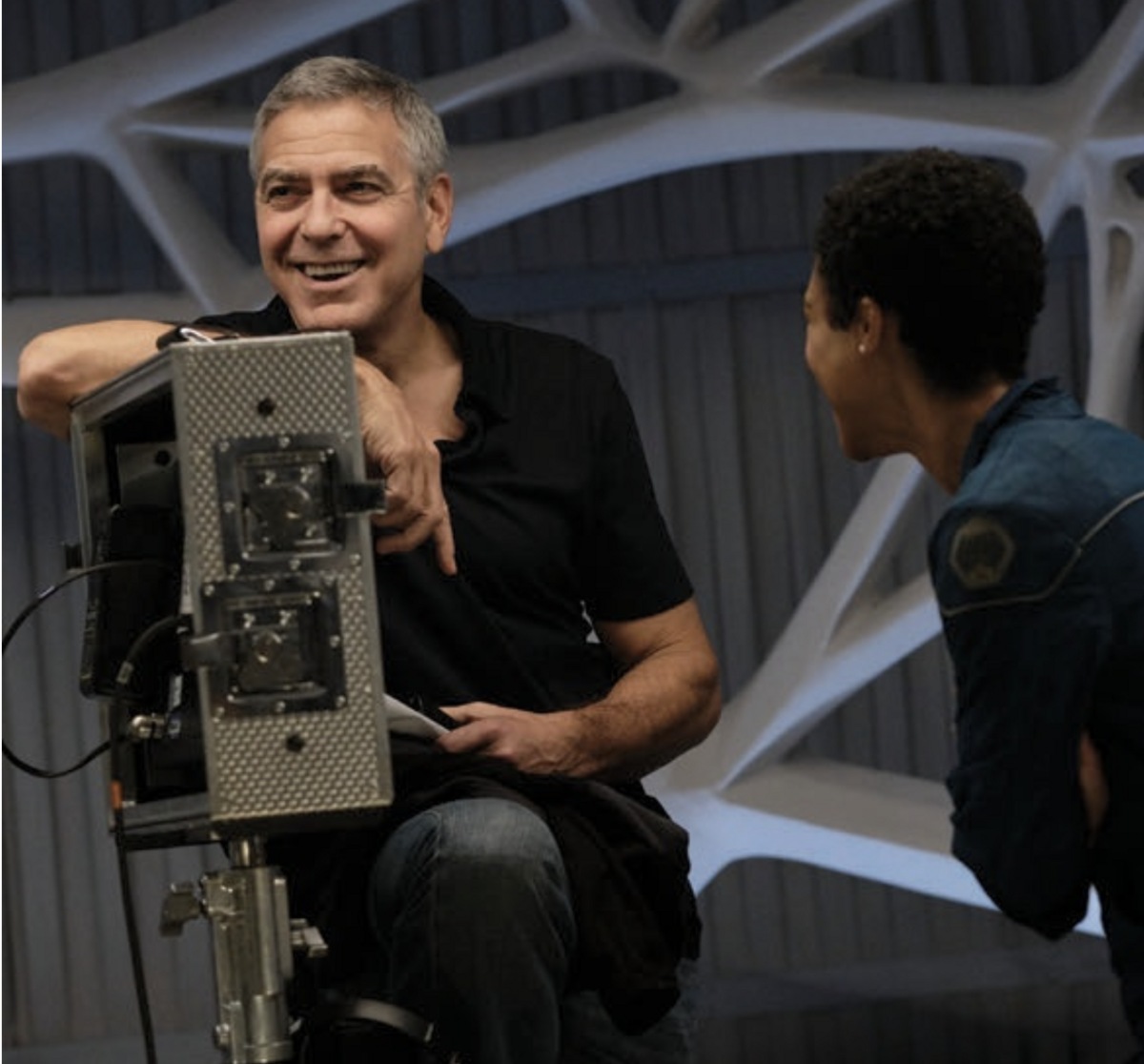
Looking Forward
Ruhe agrees and adds, “I love this film because it gets the right emotions across. It’s a pity more people won’t be able to see it on a big screen because it looks fantastic, and it’s so much more immersive.”
“I believe we’ll all go back to shooting movies on location once the health situation improves,” Ruhe continues. “I’m German and didn’t grow up in the American film industry, but I learn so much from every international crew I get to work with. It’s a tremendous gift, and I hope we’ll return to a place we can normally work again.”
With its themes of human endurance and global catastrophe, The Midnight Sky took on an added dimension premiering on Netflix during a world pandemic. Asked to consider this aspect, Clooney was deeply candid. “When I was growing up, we lived under the constant threat of a nuclear exchange between the Soviet Union and the United States,” he recalls. “We’ve long had the understanding that if we ignore science or we ignore doctors, terrible things can happen. We live on a fragile planet, and we need to do a better job taking care of it.”
This article originally appeared in the February 2021 issue of American Cinematographer magazine.
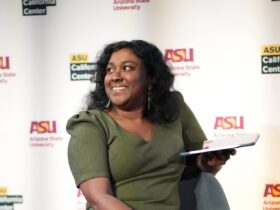
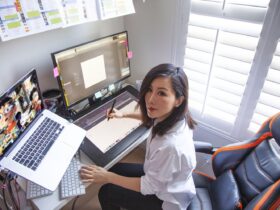
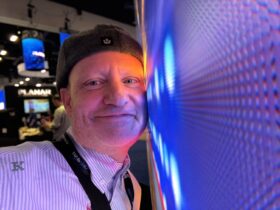
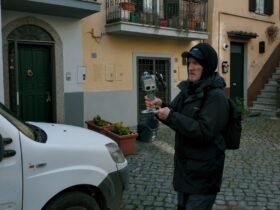
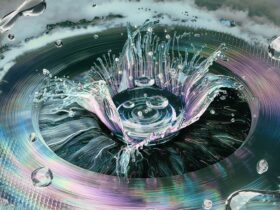
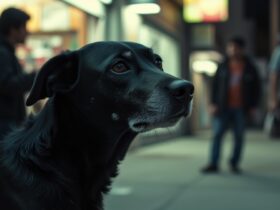
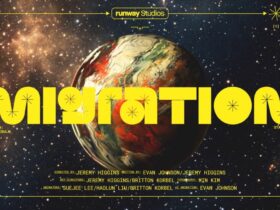
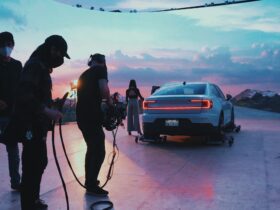
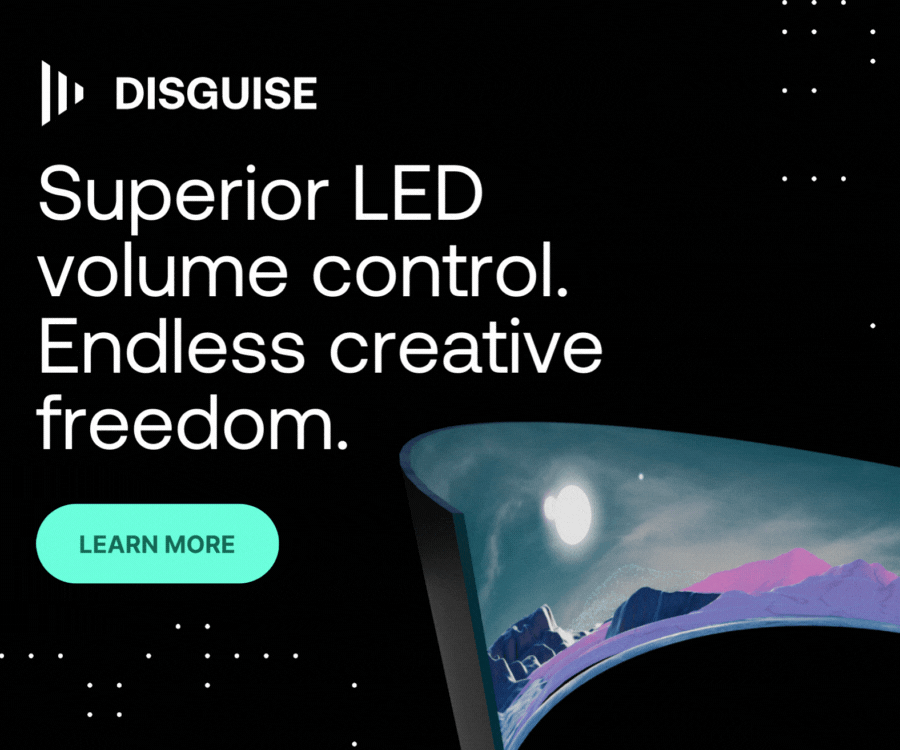
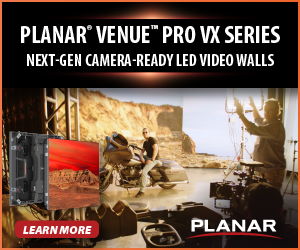

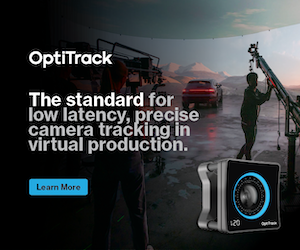
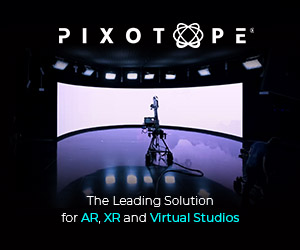
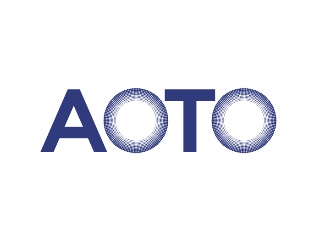

Leave a Reply